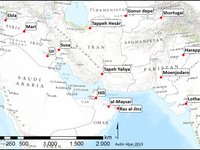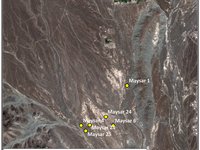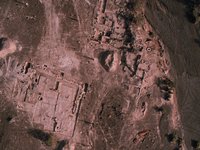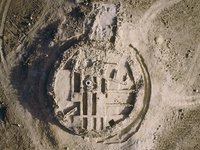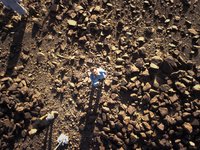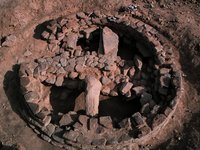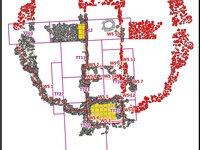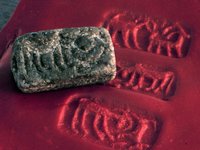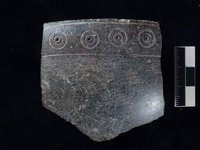Forschungsprojekte
Already at the beginning of the 20th Century, scholars assumed that the land of Magan known from Sumerian and Akkadian texts should be located in today’s Oman. Following the political changes in 1970, a large number of archaeological teams carried out works at several sites, trying to integrate the region into the political and economic map of ancient times. Several scholars have argued in favour of a quasi-capitalistic inter-regional economy. Its traces can be found in the emergence of craft specialization, visible at several urban centres. At the other end lie the immense surpluses, visible in the palaces of Mari (now Syria) and Gonur Depe (now Turkmenistan), the royal tombs of Ur (now Iraq) and hoards from Susa (now Iran) and Moenjo-daro (now Pakistan). Manifold indications hint at the long distances, which ideas, objects and individuals travelled, most probably building symbolic bridges between the upper strata of the interacting societies. The archaeological evidence is also mirrored in textual evidence ranging from the private letters of merchants to accounts of military campaigns and legends such as Enmerkar and the Lord of Aratta.
An arising question is whether and in what way these networks of communication, exchange and commerce influenced the lives of individuals at the outskirts of the centres of power. Could they have fostered exploitative relationships in the Bronze Age societies of Oman?
The case study is provided by the 3rd-millennium sites of al-Maysar, situated some 100 km south of the Omani capital of Masqat, which were surveyed and excavated between 1979 and 1996 by Gerd Weisgerber and his team from the Deutsches Bergbau-Museum. The features mostly date back to the final centuries of the 3rd Millennium BCE and comprise workshops, open-space working areas, dams, traces of horticulture and agriculture, graves, and forms of domestic architecture. They show close similarities to contemporaneous structures from sites all over Oman and the United Arab Emirates. The connection to the inter-regional exchange networks were thought to be attested by objects such as plano-convex copper ingots, and chlorite vessels of the série recente. Surprisingly the ingots found in al-Maysar 1 show different compositions which do not fit to local deposits, while série recente soft stone vessels are mostly restricted to Early Bronze Age graves on the Southeastern Arabian Peninsula.
The presumed separation into an industrial area and a domestic area is very likely unfounded. The dwellers worked both inside and outside of structures all over the site. A possible nucleus of the buildings at al-Maysar 1 might have been a second platform so far unknown (al-Maysar 1.3). At the core of the settlement most likely stood some kind of garden or oasis (al-Maysar 26), situated in between the graves (al-Maysar 4), the hilltop platform (al-Maysar 25) and the structures of al-Maysar 1. In general, it seems highly unlikely that any large-scale smelting activities took place in the period of the settlement; the overall appearance speaks more for an average village, in which the dwellers’ main occupations must have been centred on subsistence and related activities, with close ties to communities living close to the sea. Nevertheless, indications for a connection to the wide-ranging inter-regional exchange networks are sparse, as in most sites of Southeastern Arabia.
Informationen zum Projekt
Deutsches Bergbau-Museum, Bochum, Forschungsbereich Montanarchäologie
2013 – 2018
- Abar, Aydin. Beyond the Ecstasy of Copper. Crafting Dwellers in Early Bronze Age Oman. Der Anschnitt, Beihefte (in Vorbereitung).
- Hauptmann, Andreas. 5000 Jahre Kupfer in Oman. Der Anschnitt, Beiheft 4, Bochum: Deutsches Bergbau-Museum, 1985.
- Prange, M. ”5000 Jahre Kupfer in Oman 2. Vergleichende Untersuchungen des omanischen Kupfers mittels chemischer und isotopischer Analysenmethoden. ” Metalla 8 (2001): 7-126.
- Weisgerber, G. ”Evidence of Ancient Mining Sites in Oman: a Preliminary Report.” The Journal of Oman Studies. 4 (1978): 15-28, 13 Abb., Taf. 11a-26.
- Weisgerber, G. ”...und Kupfer in Oman.” Der Anschnitt. 32 (1980): 62 110.
- Weisgerber, G. ”Mehr als Kupfer in Oman.” Der Anschnitt 33 (1981): 174 263.
